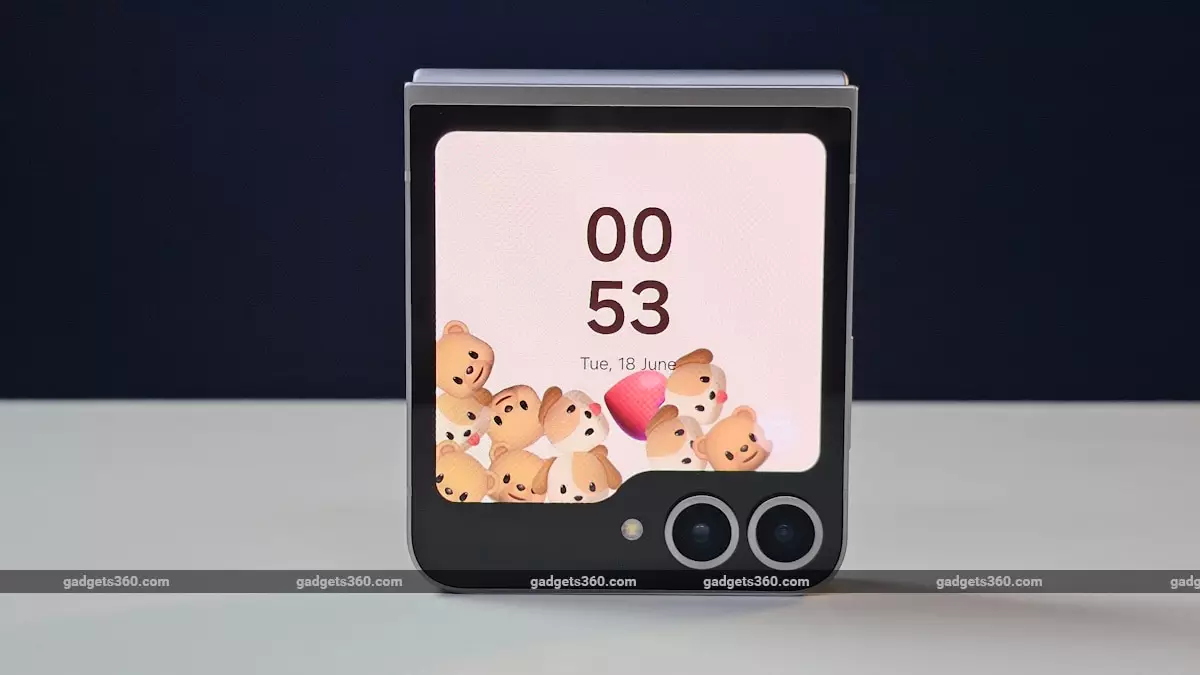The mobile technology landscape is constantly evolving, and recent developments from Samsung highlight a significant innovation regarding privacy and functionality in foldable smartphones. As consumers increasingly seek versatile devices that cater to modern needs, Samsung is leading the charge with its upcoming Galaxy Z Flip model, which is designed to enhance user experience, particularly in terms of private communication.
Currently, the primary limitation of the Galaxy Z Flip series lies in how it handles phone calls when the device is closed. Users are compelled to use the speakerphone mode, which compromises privacy. To engage in a discreet conversation, they must open the device, an act that might not always be convenient or discreet in public settings. This scenario has prompted Samsung’s collaboration with LG to seek an innovative solution aimed at revolutionizing sound transmission within foldable devices, focusing specifically on the clamshell model format.
The crux of this proposed solution involves the integration of piezoelectric technology into the device’s display. Piezoelectric materials possess the remarkable ability to convert electrical impulses into mechanical energy, which can then be harnessed to produce sound. By embedding this technology within the display layers, Samsung and LG aim to replace the conventional ear speaker—the component that typically requires physical space within the smartphone body.
The idea is enticing; users could theoretically listen to calls privately by cupping their ear against the cover display, thus eliminating the need to unfold the device. This remarkable amalgamation of functions would not only enhance user confidentiality but also optimize internal space. Given the packing difficulties inherent in foldable designs, every millimeter saved is essential for integrating other advanced features.
Although piezoelectric technology is a novel application for this specific use case, it certainly isn’t new to the smartphone industry. Its first large-scale application was realized with Xiaomi’s Mi Mix in 2016. This device utilized a piezoelectric speaker for a chic, bezel-less design, ushering in an era where aesthetic and functional elements converged. However, despite its groundbreaking attempt, the subsequent Mi Mix 2 reverted to traditional speaker technology, highlighting the challenges of balancing innovation with mass-market viability.
Samsung’s desire to revisit and enhance the use of piezoelectric technology may signal a new era of smartphone design, one where innovative auditory solutions can sway consumer opinion and establish new standards for privacy.
As Samsung gears up to introduce this technology in its upcoming foldable, the potential market implications are substantial. The goal is not only to enhance user interaction but also to position themselves as leaders in the ever-competitive sector of foldable devices, which is slowly transitioning from novelty items to mainstream preferences. If successfully integrated, piezoelectric technology could address a significant gap in the current design, empowering users with the capability to manage communications in a discreet manner while preserving the sleek, streamlined essence of modern smartphones.
In a world where privacy is increasingly becoming a commodity, Samsung’s collaboration with LG demonstrates a foresight into the future of personal communication in foldable smartphones. The blend of functionality and privacy through innovative technologies might shape how users interact with their devices moving forward. As we anticipate the launch of the Galaxy Z Flip with this pioneering technology, it symbolizes more than just a product release; it represents a pivotal moment in the ongoing saga of mobile technology evolution—one that prioritizes user needs alongside forward-thinking engineering. The potential establishment of dual audio sources within a single smartphone could redefine user experience, showcasing how innovative thinking can triumph over traditional limitations.


Leave a Reply